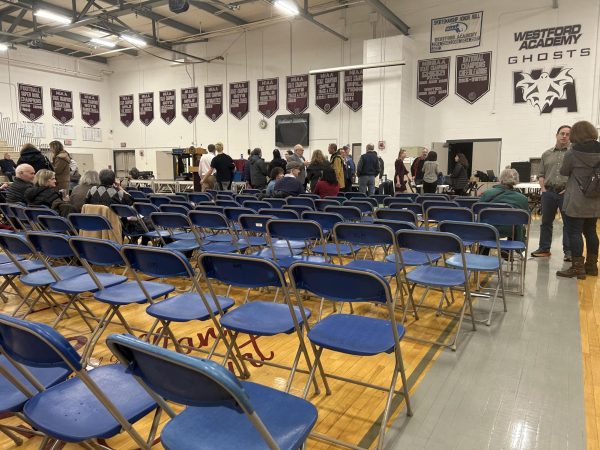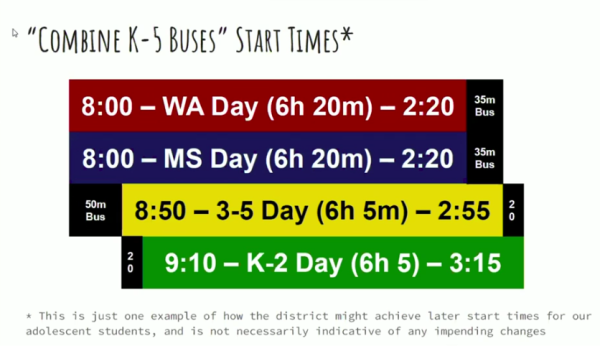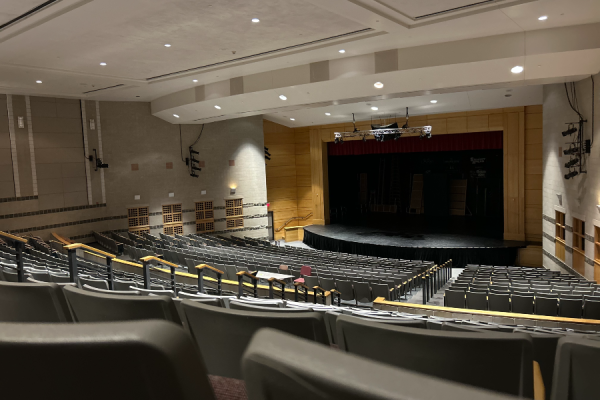The School Committee discusses the cost and logistics of later start times
Superintendent Bill Olsen addresses the class before they accept their diplomas
February 8, 2020
On Wednesday, January 22, Superintendent Bill Olsen and Director of School Finance Ingrid Nilsson held a meeting with the School Committee to talk about the cost and logistics later start times, and generally concluded that later start times would likely not be feasible during the 2020-2021 school year.
This meeting is a follow-up to the December 16 meeting in which they had initially proposed different plans for later start times. The final decision regarding later start times will be voted upon as part of the budget for next year.
According to Olsen, per state regulations, each school day for the elementary schools lasts six hours and five minutes while for the middle and high schools, each school day lasts for six hours and twenty minutes. Based on this information, they were able to create three new alternatives, each with different grade levels starting off the day.
The first proposed starting times schedule was recommended by the committee. In this proposed schedule, the lower elementary students would start the earliest, followed by upper elementary students, and lastly, the middle and high schoolers would start the latest, nearly an hour after the current start time of 7:35. The cost of implementing this plan is estimated to be at most $332,818.

“Alternative 1” was the second option discussed. In this plan, third to fifth grade students would start their day the earliest, followed by the middle and high schoolers, and lastly the lower elementary students. The cost of implementing this plan is estimated to be $48,000 at most.

Lastly, “Alternative 2” was also briefly mentioned. In this schedule, none of the grade levels would switch start times. Instead, every start time would be pushed back by thirty minutes, and the middle schooler would start 15 minutes later than the high schoolers. The cost of this schedule is also the same as the recommended School Committee schedule, with a maximum of $332,818 as the price.

With both the School Committee’s recommended starting times and Alternative 1, there were several factors that needed to be taken into consideration in addition to regular busing to and from the schools.
To start off, everyday there are several sports buses going out of town for games and practices. If any of the proposed timings were to be chosen, then this would mean that 4-6 more buses would be needed to accommodate for the lower or upper elementary students who are being dropped off around the same time. However, these are not buses that Dee Bus Service can provide; therefore, the unknown cost of more buses through a different vendor also provides uncertainty.
Additionally, Olsen brought up the point that several sports also have to rent facilities outside of the high school. In this case, the availability of practice facilities will pose a problem if practice starts occurring earlier in the afternoon.
“Sports such as hockey, […] swimming, [and] soccer and lacrosse require rentals of facilities. […] We’re given specific pool times; we’re given specific rink times for the hockey team. And so, those need to come into consideration,” Olsen said.
The second main issue concerning the recommended School Committee schedule and Alternative 1 is the concern for the safety of the lower elementary students. In terms of being dropped off to school, many lower elementary students may be left waiting in the early morning—when it is still dark—out in the case that lower elementary students switch places with the middle and high schoolers. This is a safety concern for many parents.
However, School Committee member Megan Eckroth argued that this may not be the case due to differences in bus routes between elementary and middle/high schools.
“If you’re talking about bus runs for K-2 schools, you’re talking about much smaller districts. Wouldn’t that then in turn shorten those bus runs, which would make them get on the bus later and not having a 6:45 in the dark pickup? If school started at 7:45, you know, maybe they’re not getting picked up until 7:10,” Eckroth said.
Logistically, this also means that there would not be an early arrival program for elementary students. This is also another program from which the district derives revenue, so altering the start time would mean possibly getting rid of the early arrival program.
After-school care may also have to be extended as children may wait for up to five hours given that the School Committee’s recommended schedule is implemented. Assistant Superintendent Dr. Kerry Clery explains how children are not allowed to be dropped off if there are no parents present to receive them, posing delays for other students.
“One point […] is that there is that caveat in the K-2 run, that they oftentimes go to drop off at home and have to go back to schools. So, if [the bus drivers] are then trying to get to the middle school [and] high school, which would be the next tier, that may very much interrupt that,” Clery said.
In regards to the School Committee’s recommended starting times, Olsen also commented running a preschool program would pose logistical issues for parents and teachers given the earlier start in the day for elementary and preschool students.
“It is difficult to run a preschool program with an early start time. That is based on […] the 7:45 start time, We’d have children in the half-day program who are basically ending in the 10 or 10 o’clock to eleven o’clock range, and that’s difficult for parents to have a child attend that early and get out that early in the day. And so, we would recommend that there be no half-day preschool program,” Olsen said.
Ultimately, Alternative 1 was seen as a better fit than both the School Committee’s recommendation and Alternative 2. Not only was the cost lower, but the concerns for lower elementary school students were eliminated due to simply the switching of upper elementary students with middle and high school students.
In the end, School Committee member Alicia Mallon spoke to the issue of the lack of money necessary to follow through with implementing later start times.
“Not to speak for the entire committee, but my current feeling is that this is not going to happen this year. This is not the right fiscal climate and I feel like there are far too many unanswered questions. I can guarantee you I’m going to be here next year and this is going to come up because it’s important for the mental health of our students,” Mallon said.
Eckroth continued to echo many of the same sentiments as Mallon.
“When we do have a breaking point and decide it is the time, it has to be seen as an investment and not a detriment to the rest of our budget. And I agree […] that I don’t think we’re there,” Eckroth said.
Clery tells the students and staff to rest assured, however, as she believes that administration is already using other methods to address the well-being of the students.
“If the committee so chooses to postpone this based on this fiscal climate, there are still so many things that we are doing, that other districts are not, to address the social-emotional needs of our students. […] It’s not as though if we don’t do this, then we are not moving forward,” Clery said.
To read all the budget materials presented on Wednesday, January 22, including the charts included above, read through this PDF released by the School Committee.


















